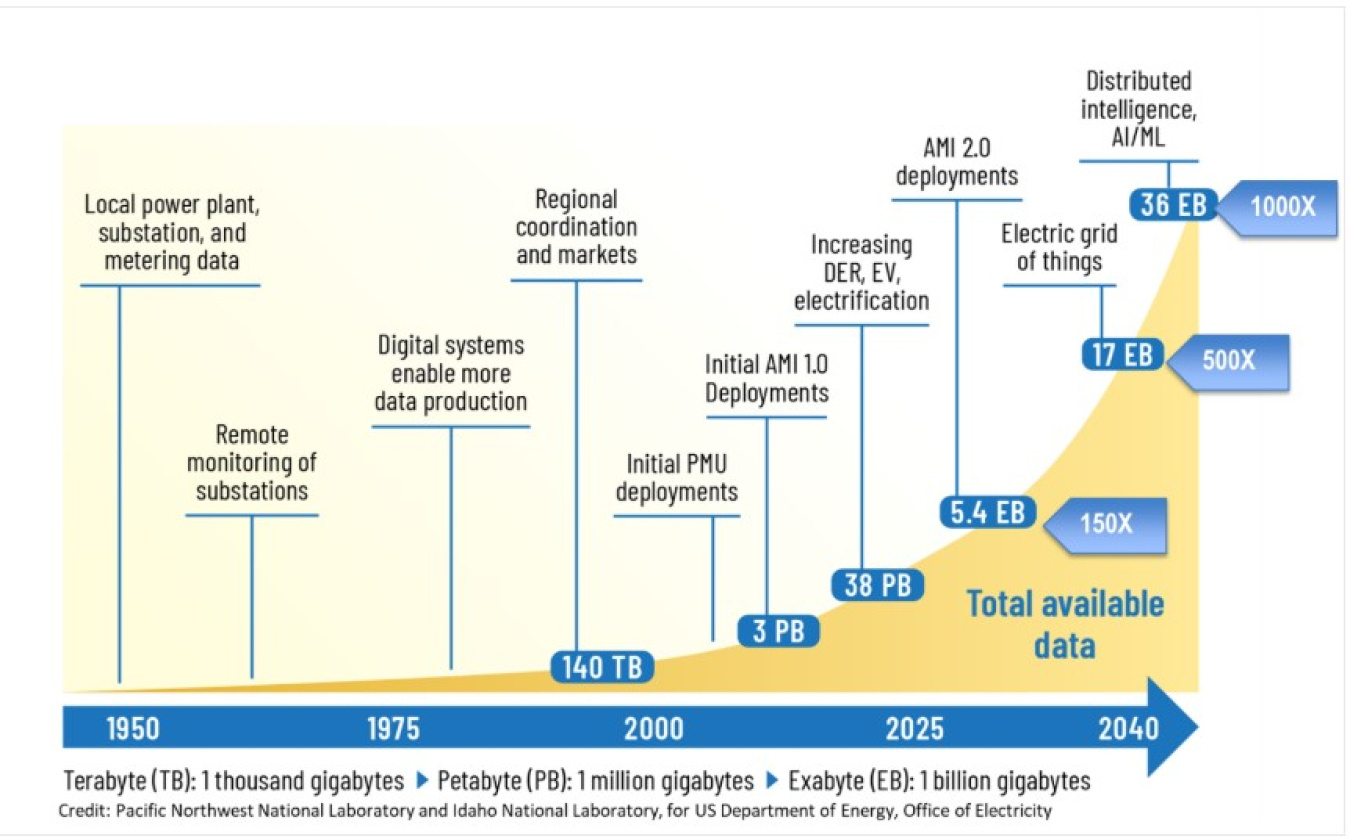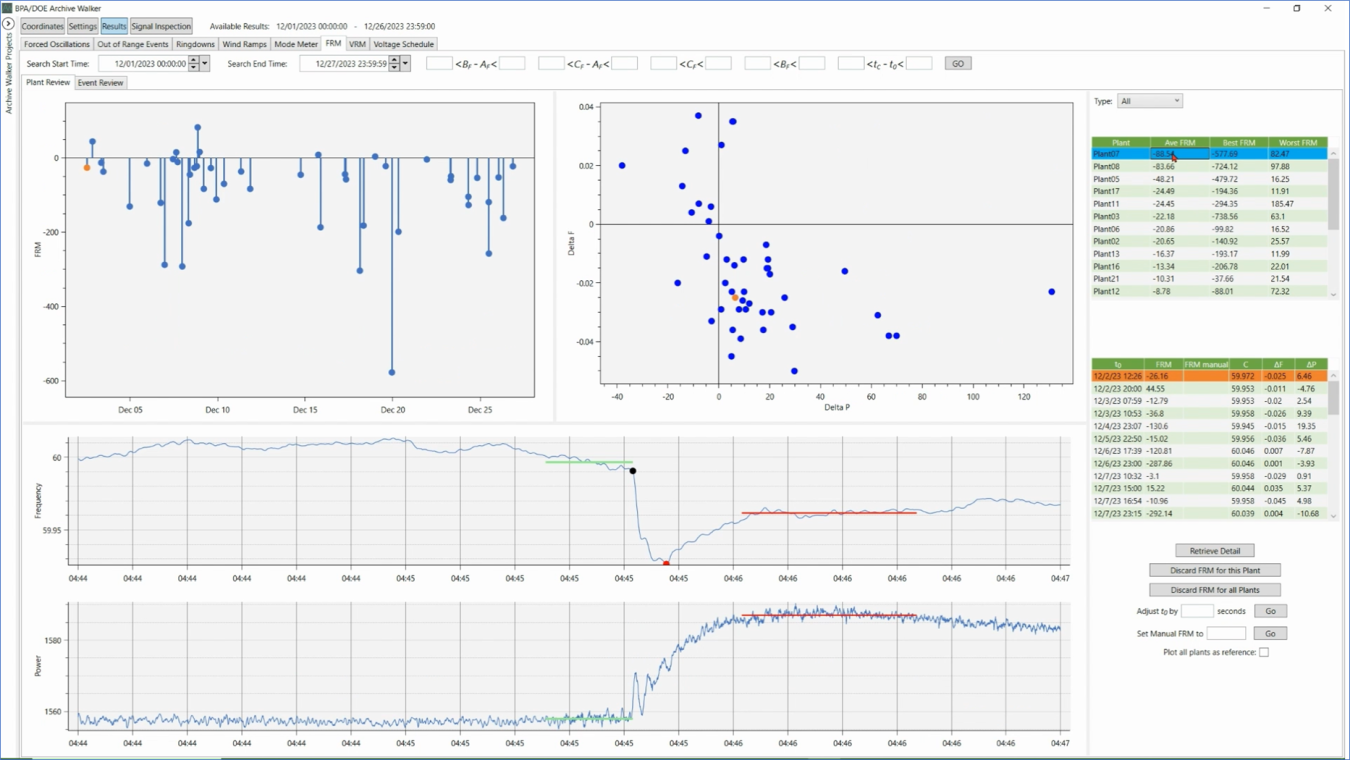The Office of Electricity connects DOE, national labs, and the electricity industry to develop technologies that support reliability, security and affordability. Grid controls allow utilities to match supply and demand of electricity in real time and respond to unexpected changes and power disturbances. Effective grid operations include both grid visibility and situational awareness, and control functionality and approaches. Researchers must also bridge the gap between engineering prototypes and user-ready tools for the power sector workforce and to ensure grid reliability in light of new demands on the system from dynamic loads and system instabilities.
The program area incentivizes the use of existing infrastructure while continuing to integrate the next generation of critical grid components to avoid reliability events and blackouts. Specific areas of focus in Grid Reliability, Resilience, and Control are specified below.
Transmission Reliability and Operations
The transmission system is the backbone of the electric grid–-moving large amounts of power across the United States. New technologies and system approaches are critical for strengthening the power grid. Matching supply of power with ever changing demands requires system operators to have timely and accurate situational awareness and decision support tools, and effective controls. Innovations from this program improve grid stability, control, and reliability while increasing the capacity of the power system.
- System Measurement and Wide Area Situational Tools–-Improve situational awareness of grid conditions and disturbances.
- Analytic Methods to Mitigate Reliability Changes–-Mitigate and correct power flow issues and improve grid reliability and strength.
- Software Solutions for Uncertainty Tolerant Operations–Manage risks associated with uncertainties in operating conditions, including those from system complexities, reliability events, and infrastructure interdependencies.

Distribution Grid Control and Econometrics
The demands on the distribution grid have been rapidly increasing as the American economy has become more dependent on electricity. Multiple, independent resources connected to the electric distribution system require a coordinated interconnection approach. Preventing power outages through effective control and design of the distribution systems is critical to ensure to ensure Americans have power when and where they need it. New sensors, data processing, and control schemes can allow grid operators to better manage supply and demand or power on the distribution system.
Utilities must consider the economic factors to incentivize reliability and improve affordability and whether systems for evaluating the effectiveness of economic controls are needed. Econometrics for distribution system planning, control and investment are important for maintaining affordability while increasing power system reliability.

Utility Digitization, Grid Measurement and Human Factors
Digital systems and data analytics are transforming the energy sector. OE is driving academics, scientists, and the electric power industry, through projects and prizes, to examine current methods of analyzing and measuring data and their associated standards that address outdated processes. The amount of data from the power system is rapidly increasing, however, systems and tools for structuring, processing and utilizing this data for decision making is lagging. To unlock the future potential new data sources, better standards, and tools for data processing, analysis and visualization are needed to meet the needs of a rapidly evolving energy system. Tools that support real-time decision-making ae needed to collect measurements, process them, and display results to the operator.
Making timely and accurate high-stakes decisions during fast-moving weather events requires utilities to quickly comprehend complex data sources. Yet when those data sources conflict, making complex decisions about grid reliability is challenging. That is why the Office of Electricity is leading standards and tools that uniformly collect, measure and process results to help system operators make better decisions in the face of emergency events.

Human Factors and Cognitive Science for Grid Operations
As modern transmission system tools proliferate throughout the electric utility industry, one aspect that is often overlooked are the human factors that go into the power system operations. How well do people who operate the system respond to multiple data inputs simultaneously, especially in the face of stressful conditions? Human factors engineering is a discipline concerned with designing tools, machine interfaces and systems using cognitive science to meet users' needs based on human capabilities, limitations and characteristics. OE is supporting programs that are addressing workforce training, control room application improvements, and robust decision making:
- Outlining decision processes and developing training simulations: This area supports tools for operators when making control room decisions. It also includes workforce development.
- Creating advanced control room software and visualizations: Advanced control room software and visualizations help ease operator burden by training them to overcome new operating challenges.
- Leveraging national lab and industry partnerships: By leveraging national lab partnerships, we can increase real-world user testing and feedback collection from control room engineers.




